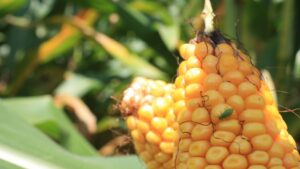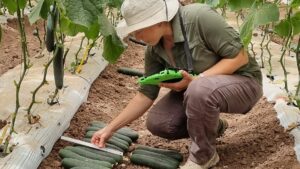A solid management plan for corn rootworm this summer can help growers plan for 2019 product selection.
The corn rootworm has earned the nickname the “billion-dollar bug.” It’s been estimated that the damage caused by the pest and costs associated with controlling it typically total $1 billion annually – including approximately $800 million in yield loss and $200 million in treatment expense.
According to Sean Evans, Technology Development Manager with Monsanto, depending on levels of infestation yield loss can be anywhere from 15 to 50 percent. “Producers need a comprehensive plan to control the billion-dollar bug,” he says.
Scouting Matters
In addition to planting the best seed, growers also need to understand alternative best management practices when controlling corn rootworm populations, especially for corn on corn acres, says Evans. This includes scouting fields at various times in the summer and evaluating how their corn rootworm control is working.
“After overwintering, rootworm larvae hatch around Memorial Day weekend and, as they feed, damage begins to appear,” explains Evans. “Damage from corn rootworm larvae is usually apparent within a few weeks after hatch begins, and significant damage can be observed a short time later. Therefore, growers should start scouting and conducting root digs somewhere around mid-late June through mid-July. Early monitoring provides a good measure of which fields need to be watched more closely and how control tactics are performing.”
Evans says that while corn on corn acres provide the most risk, certain varieties of rootworm can lay eggs in soybeans, while other varieties overwinter for two years; therefore, it’s a good idea to check first year corn acres as well.
“As the crop progresses into reproduction growers will have a good idea at how severe the larvae damage was, and then through grain fill scouting fields again will give growers an indication on the number of adult beetles,” says Evans. “The emergence of the adult beetles is a key period for field evaluations of product performance and the numbers will help you decide what to do the next year.”
Knowledge is Key
If late summer, field evaluations indicate a high corn rootworm beetle population, Evans says a proactive approach to next year’s crop is likely the best management tactic. “Knowledge that can only be gained with field evaluations is the best way to go about selecting the products to place on your fields,” Evans says. “Only by spending time in the field to determine the assets and challenges that exist can a farmer make an informed product selection.”
Evans says insect pest management is key to managing corn rootworm. “Rootworm is an insect that’s best controlled with multiple tactics, including crop rotation, trait technology, soil-applied insecticide and, if absolutely necessary, foliar insecticide sprays,” he says.
Monsanto’s SmartStax® RIB Complete® corn blend provides full-season corn rootworm control for heavy-pressure situations like fields with a history of corn following corn. In the presence of rootworm, 2017 on-farm side x side comparisons conducted by Monsanto’s technology development teams across the U.S. showed an average of a 12.8 bushels per acre yield advantage for SmartStax RIB Complete corn blend over genetically similar non-traited products. Similar studies in previous years have seen that advantage as high as 20 bu/ac.
As growers face more and more pressure to tighten their margins and cut certain costs, they might be tempted to minimize the focus on corn rootworm—a decision that can cost a lot. “We encourage growers to make the decision based on information that comes from scouting their fields,” says Evans. “If you have a corn rootworm problem, and don’t know it, the downside is huge.”













